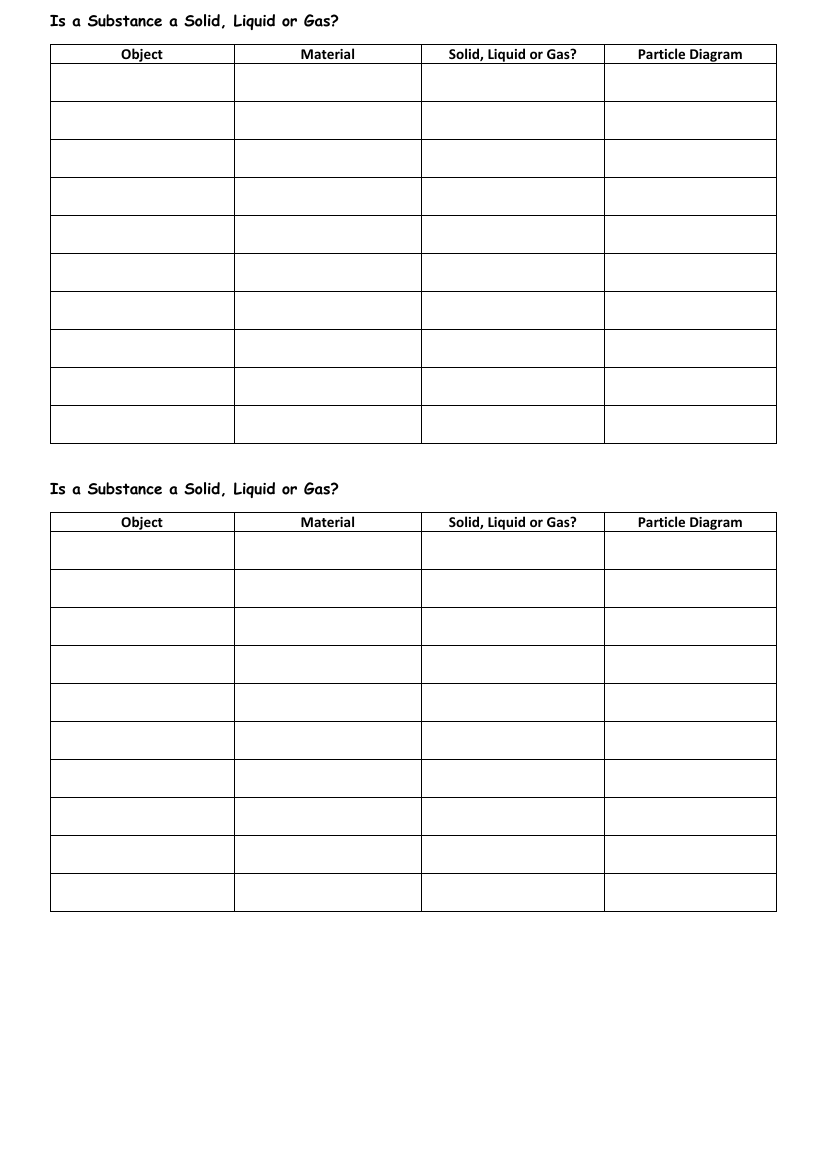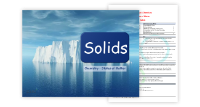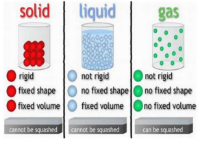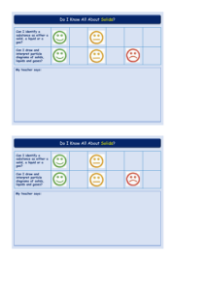Solids - Results Tables

Science Resource Description
In an educational setting, students are often presented with a task to determine the state of matter for various substances, which can be a solid, liquid, or gas. To facilitate this learning activity, a results table is used where students can record their observations and conclusions. The table typically includes columns for the object under investigation, the material it's made of, its state of matter (solid, liquid, or gas), and a particle diagram that visually represents the arrangement and behaviour of the substance's particles in that state.
The particle diagrams are a crucial element of the table as they help students understand the fundamental differences between solids, liquids, and gases at a microscopic level. In solids, particles are closely packed in a regular pattern and vibrate in fixed positions, while in liquids, they are close together with no regular arrangement and can move past one another. In gases, the particles are well separated with no regular arrangement and move quickly in all directions. By filling out this table, students can visually and theoretically explore the properties of different materials and develop a deeper understanding of the states of matter.







